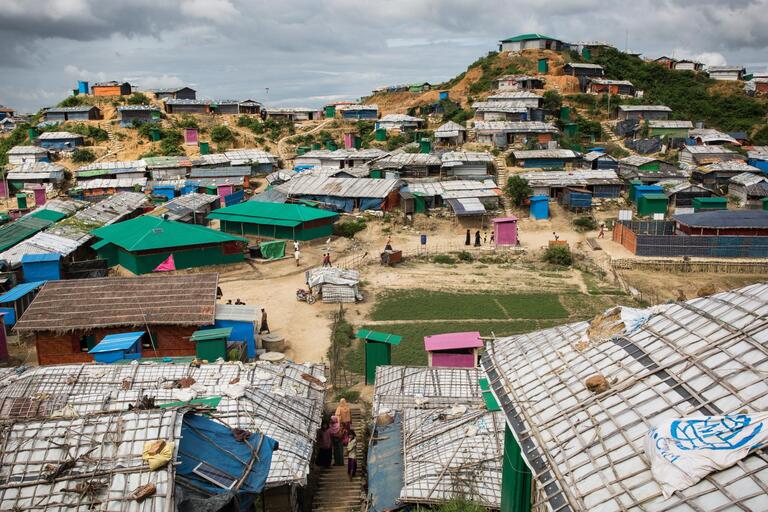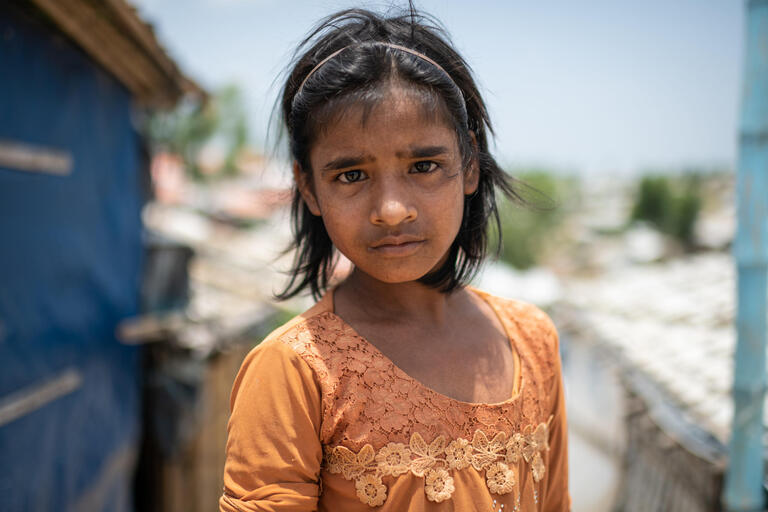Today, 25 August 2019, marks the two-year anniversary of the start of the largest ever stream of refugees out of Myanmar.
Stateless and neglected for decades. This is why the United Nations refers to the Rohingya as one of the world’s most persecuted minorities. Since 25 August 2017, around 740,000 Rohingya have fled Myanmar to Bangladesh. More than 630,000 are living in Kutupalong, the world’s largest refugee camp.

In Bangladesh, the Rohingya live in a state of limbo. They have been denied formal refugee status by the government of Bangladesh, and they have no realistic opportunity to return to Myanmar, where they fear violence and persecution.
A difficult and vulnerable situation
Daily life for the refugees, who are spread across 34 camps, is very challenging. They only have temporary shelters, and the rainy season, which can be fierce in Bangladesh, causes flooding, while accelerated deforestation around several of the camps has increased the risk of landslides. Unsafe drinking water increases the risk of various diseases and infections.

The assistance that the refugees receive in the form of healthcare, education and shelter is very limited. They are also vulnerable to human trafficking and exploitation as cheap labour.
Bangladeshi families are suffering too
Most of the refugees are hosted in Cox’s Bazar, one of the poorest districts in Bangladesh. The local population has demonstrated great hospitality in hosting the overwhelming number of displaced Rohingya alongside their own communities.
However, this hospitality has come at a personal cost to many Bangladeshi families, with swamped labour markets, reduced wages and loss of access to customary agricultural land. The refugee presence has also led to large-scale deforestation of a former wildlife preserve.

We are now beginning to see friction between refugee and host communities as an estimated 336,000 Bangladeshis suffer the effects of displacement alongside the Rohingya refugees. The hospitality of the local population will only be eroded further if the international community continues to fail in its efforts to address this crisis.
“The refugees must not only receive basic support for survival, but also an opportunity to live a dignified life, get an education and livelihood opportunities,” believes Shaun Scales, country director for the Norwegian Refugee Council (NRC) in Bangladesh. “The international community should take their share of responsibility and increase their economic support, but also step up political and diplomatic efforts to secure durable solutions for the Rohingya.”

Proposed relocation brings risks
The government of Bangladesh has stated that they wish to decongest the dangerously overcrowded camps and improve refugees’ living conditions. One plan is to relocate 100,000 Rohingya refugees to the low-lying island of Bhasan Char, off the southern coast of Bangladesh.
Whilst government action to address the poor situation in the mainland camps is needed, aid agencies are concerned about this plan. They feel there is a lack of information on how the inherent risks associated with accommodating a large refugee population on the island will be mitigated. These risks include the lack of freedom of movement, family separation, lack of access to essential services and the potential exposure to severe natural disasters during the monsoon season.
The nature of any future relocation to Bhasan Char is currently unclear, as are the options that would be available to any refugees who did not wish to relocate.

A history of displacement
The Muslim Rohingya minority in Myanmar, which lives mainly in the western Rakhine province near the border to Bangladesh, has been subject to discrimination and abuse for many years. The first people began to flee in the 1970s. In 1982, they were deprived of citizenship by the authorities, and a new wave of refugees arrived in Bangladesh in the early 1990s.
Both 2012 and 2013 saw violent clashes between groups from the Buddhist majority population and the Muslim Rohingya minority in Rakhine. Over 140,000 people were displaced in 2012 alone, both internally within Myanmar and across the border into Bangladesh. However, the tragedies that unfolded received little international attention.
This changed in the spring of 2015 when country after country in Southeast Asia refused to take in the thousands of Rohingyas fleeing in ramshackle vessels. At the time the priority was to save the lives of the boat refugees, but the situation also demonstrated that there was a need to provide lasting, comprehensive solutions for the entire Rohingya population.
But instead, increased violence in the autumn of 2017 led to the most recent and most intense migration of refugees out of Myanmar.

Are the conditions right for returns?
A key challenge is that Bangladesh and Myanmar have completely different approaches to the problem. While the authorities in Myanmar regard the Rohingya as illegal immigrants or descendants of immigrants from Bangladesh, the authorities in Bangladesh have maintained that everyone without a formal residence permit should be returned to Myanmar.
In November 2017, Bangladesh and Myanmar signed an agreement to allow the refugees to return, but so far nothing has happened. More recently, on 15 August 2019, both countries announced that they would start a fresh attempt to repatriate thousands of Rohingya refugees. The UN refugee agency however insists that any returns should be voluntary and on the basis of informed consent.
Today, just two years on, aid agencies do not believe that the necessary preconditions for a return that is voluntary, safe, dignified and in line with international standards are yet in place.

“This is not the time for large-scale returns,” says Scales. “The situation in Myanmar is fragile and conflict affects all communities in Rakhine state, as well as across the country. As long as the safety of families returning to Myanmar cannot be guaranteed, nobody should be pushed to go back.”
See also: NGOs warn of worsening crisis in Myanmar


